
OWNER???S MANUAL
LG Digital
Signage
(MONITOR SIGNAGE)
Please read this manual carefully before operating your set and retain it for future reference.
42SH7DB
49SH7DB
55SH7DB

OWNER???S MANUAL
LG Digital
Signage
(MONITOR SIGNAGE)
Please read this manual carefully before operating your set and retain it for future reference.
42SH7DB
49SH7DB
55SH7DB

ENGLISH
2
TABLE OF CONTENTS
3LICENSES
4ASSEMBLY AND PREPARATION
4 Optional Accessories
6 Parts and Buttons
6Connecting the Stand
7Connecting the Speakers
7Connecting IR & Light Sensor
8Portrait Layout
9Attaching and Removing the LG Logo Bracket
10Installing on a Wall
12 REMOTE CONTROL
14Displaying the Device Name Connected to an Input Port
14White Balance Adjust Menu
15MAKING CONNECTIONS
15 Connecting to a PC
15 External Device Connection
17Daisy Chain Monitors
18TROUBLESHOOTING
21 PRODUCT SPECIFICATIONS

3
LICENSES
Supported licenses may differ by model. For more information of the licenses, visit www.lg.com.
The terms HDMI and HDMI
This DivX Certified?? device has passed rigorous testing to ensure it plays DivX?? video. To play purchased DivX movies, first register your device at vod.divx.com. Find your registration code in the DivX VOD section of your device setup menu.
DivX Certified?? to play DivX?? video up to HD 1080p, including premium content.
DivX??, DivX Certified??and associated logos are trademarks of DivX, LLC and are used under license.
Covered by one or more of the following U.S. patents: 7,295,673; 7,460,668; 7,515,710; 7,519,274.
Manufactured under license from Dolby Laboratories. Dolby and the
ENGLISH
 NOTE
NOTE
?????? The warranty will not cover any damage caused by using the product in an excessively dusty environment.
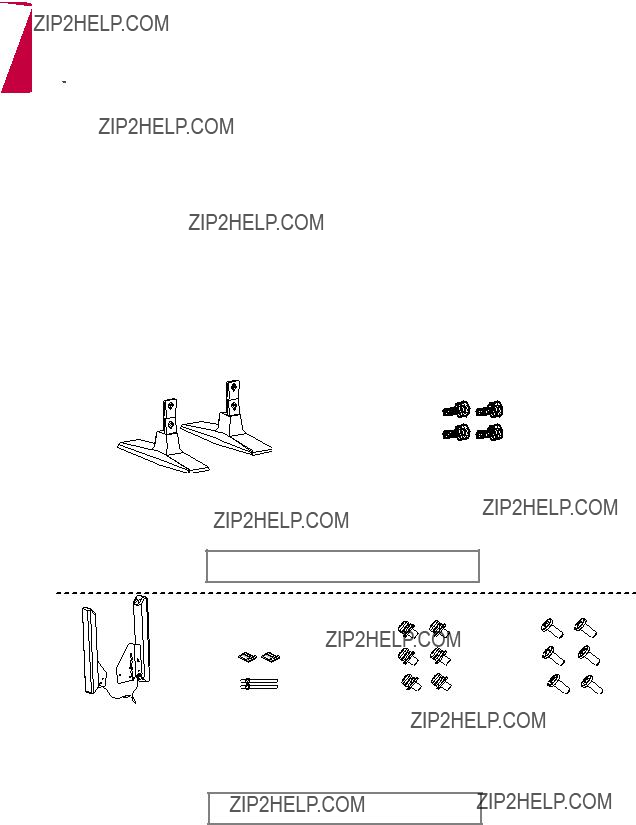
ENGLISH
4
ASSEMBLY AND PREPARATION
 CAUTION
CAUTION
?????? Always use genuine components to ensure safety and product performance.
?????? The product warranty will not cover damage or injury caused by the use of counterfeit components.
 NOTE
NOTE
?????? The accessories provided with your product may vary depending on the model or region.
?????? Product specifications or contents in this manual may be changed without prior notice due to upgrade of product functions.
?????? SuperSign Software & Manual
-Downloading from the LG Electronics website.
-Visit the LG Electronics website (www.lgecommercial.com/supersign) and download the latest software for your model.
Optional Accessories
Without prior notice, optional accessories are subject to change to improve the performance of the product, and new accessories may be added. The illustrations in this manual may differ from the actual product and accessories.
Stand kit
Screws
Diameter 4.0 mm x Pitch 1.6 mm x Length 10 mm
Speaker kit
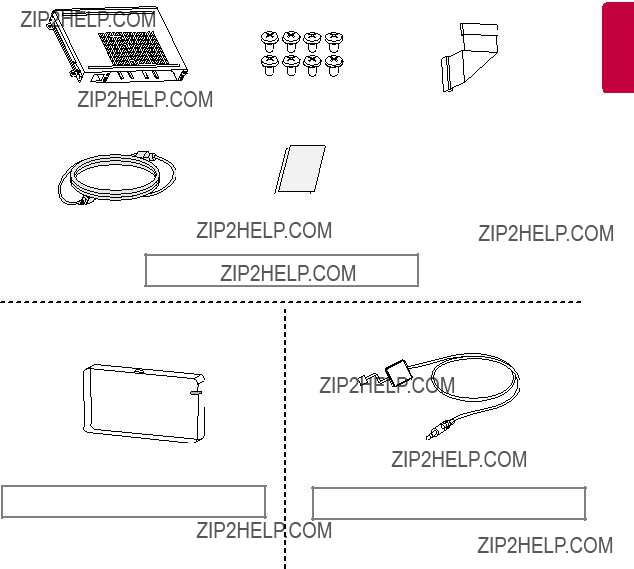
5
ENGLISH
OPS kit
Pixel sensor kit
 NOTE
NOTE
?????? Cable holder/Cable tie may not be available in some areas or for some models.
?????? Optional accessories are available for some models. If necessary, please purchase them separately.
?????? Pixel sensor is sold separately. You can obtain additional accessories from your local retail store.
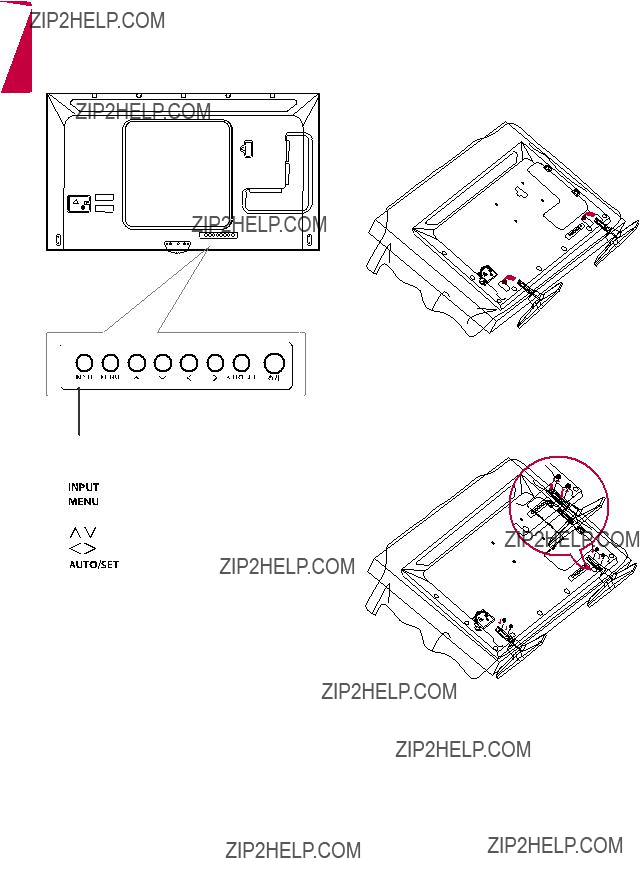
6
ENGLISH
Parts and Buttons
-The image may be different according to the model
Connecting the Stand
-For certain models only.
-The image may be different according to the model
2
yy  /I: Turns the power on or off.
/I: Turns the power on or off.
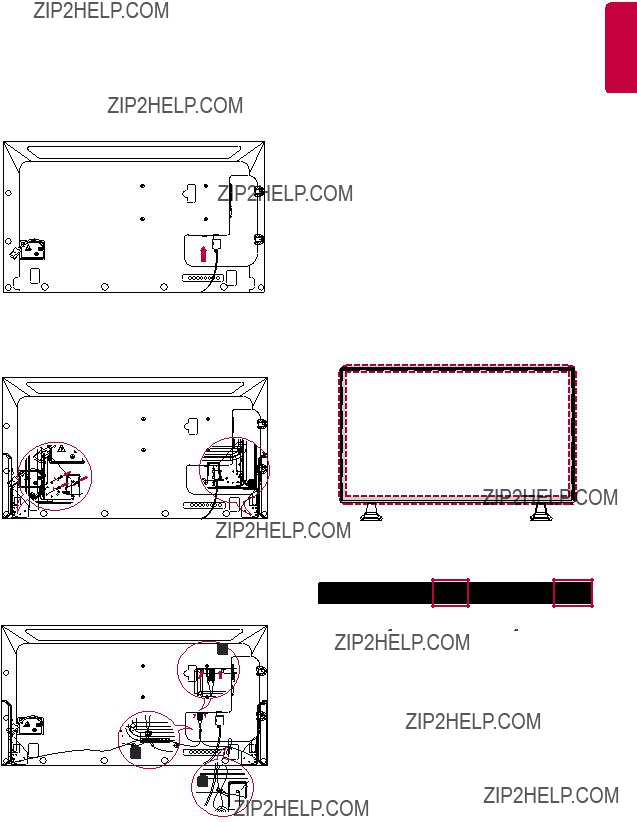
Connecting the Speakers
-For certain models only.
-The image may be different according to the model.
1Connect an input signal cable before installing the speakers.
7
 NOTE
NOTE
?????? Please turn off the power before removing the cable. Connecting or removing the speaker cable while turned on may result in no sound.
ENGLISH
2Mount the speakers by using screws as shown below. Make sure the power cable is disconnected before making a connection.
3Connect the speaker cables noting the correct polarity. Use cable holders and cable ties to organize the speaker cables.
Connecting IR & Light Sensor
When you connect the cable to the product, the feature for receiving remote control signals is activated. The IR & light sensor is magnetic. Attach it to the front edge of the product for use.
[Front]
 CAUTION
CAUTION  CAUTION
CAUTION
 NOTE
NOTE
?????? The signal strength of the IR and Light sensor will decrease if the sensor is not placed in front of the product.

ENGLISH
8
Portrait Layout
When installing in a portrait layout, rotate the monitor counterclockwise 90 degrees (when facing the screen).
Using Kensington Lock
(This is not available for all models.)
The Kensington security system connector is located at the back of the monitor. For more information on installation and use of this system, refer to the manual provided with the Kensington security system or visit http://www.kensington. com.
Connect the Kensington security system cable between the monitor and a table.
NOTE
?????? The Kensington security system is optional. You can obtain additional accessories from most electronics retail stores.
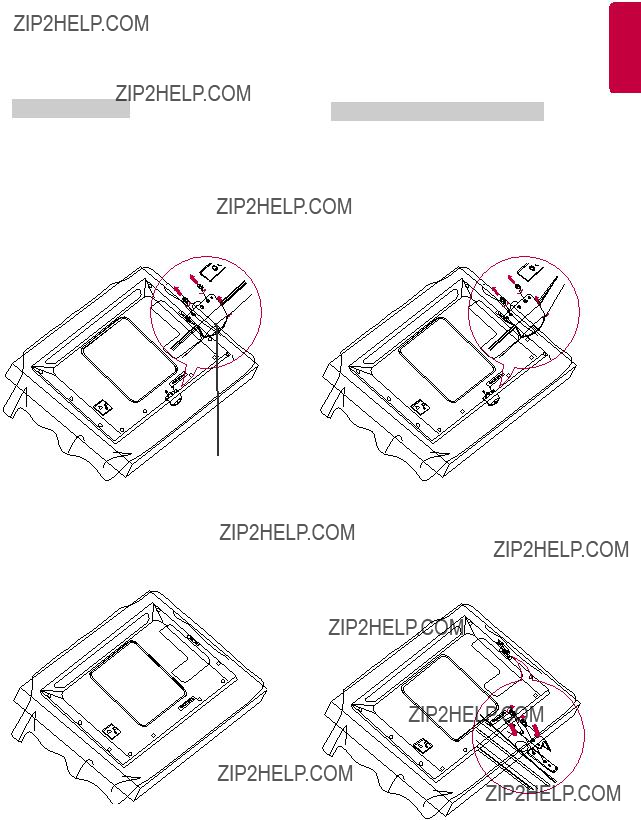
9
Attaching and Removing the LG Logo Bracket
-For certain models only.
-The image may be different according to the model.
ENGLISH
Removing the LG Logo
1Lay a clean cloth on the floor, and then put the monitor on it with the screen face down. Remove the two screws that secure the LG Logo Bracket to the bottom of the rear side of the monitor using a screwdriver.
LG Logo Bracket
2After removing the screws, remove the LG Logo. When
Attaching the LG Logo on the right side
1Lay a clean cloth on the floor, and then put the monitor on it with the screen face down. Remove the two screws that secure the LG Logo Bracket to the bottom of the rear side of the monitor using a screwdriver.
2After removing the screws, remove the LG Logo. Attach the LG Logo Bracket with the two screws, aligning it with the holes at the right side.

10
100 mm 
100 mm 
To install your monitor on a wall, attach a wall mounting bracket (optional part) to the back of the monitor.
Make sure that the wall mounting bracket is securely fixed to the monitor and to the wall.
1Use only screws and wall mounting brackets that conform to VESA standards.
2Screws which are longer than standard length may damage the inside of the monitor.
3A
Electronics is not liable for any accidents related to the use of
4Please use VESA standard as below.
??????785 mm and above
*Fixing screws: Diameter 6.0 mm x Pitch
1.0mm x Length 12 mm
785 mm
 CAUTION
CAUTION
?????? Disconnect the power cord before moving or installing the monitor to avoid risk of electric shock.
?????? If you install the monitor on a ceiling or slanted wall, it may fall and result in injury. Use an authorized LG wall mount and contact your local dealer or qualified personnel to assist with the installation.
?????? Do not over tighten the screws as this may damage the monitor and void your warranty.
?????? Use only screws and wall mounting brackets that meet the VESA standard. Any damage or injuries caused by misuse or use of improper accessories are not covered by the warranty.
?????? To prevent injury, this apparatus must be securely attached to the wall in accordance with the installation instructions. (This pertains only to Australia and New Zealand.)
 NOTE
NOTE
?????? The wall mount kit includes the installation guide and all necessary parts.
?????? The wall mounting bracket is optional. You can obtain additional accessories from your local dealer.
?????? The length of screws required may differ depending on the wall mount. Be sure to use the correct length.
?????? For more information, please refer to the guide provided with the wall mount.

Securing the monitor to a wall (optional)
(Procedure may differ depending on the model.)
11
1Insert and tighten the eyebolts, or brackets and bolts on the back of the monitor.
- If there are already bolts inserted in the eyebolts??? position, remove the other bolts first.
2Mount the wall brackets with the bolts to the wall. Match the location of the wall bracket and the eyebolts on the rear of the monitor.
3Connect the eyebolts and wall brackets tightly with a sturdy cord.
Make sure the securing cord is horizontal with the flat surface.
ENGLISH
WARNING
?????? If the monitor is not positioned in a sufficiently stable location, there is a danger that it will fall. Many injuries, particularly to children, can be avoided by taking simple precautions such as:
????Using cabinets or stands recommended by the manufacturer.
????Only using furniture that can safely support the monitor.
????Ensuring the monitor is not overhanging the edge of the supporting furniture.
????Not placing the monitor on tall furniture (for example, cupboards or bookcases) without anchoring both the furniture and the monitor to a suitable support.
????Not placing cloth or other materials between the monitor and supporting furniture.
????Educating children about the dangers of climbing on furniture to reach the monitor or its controls.
CAUTION
?????? Make sure that children do not climb on or hang from the monitor.
NOTE
?????? Use a platform or cabinet that is large and strong enough to support the monitor securely.
?????? Brackets, bolts, and cords are sold separately. You can obtain additional accessories from your local retail store.
?????? The illustration shows a general example of installation and may look different from the actual product.

ENGLISH
12
REMOTE CONTROL
The descriptions in this manual are based on the buttons on the remote control. Please read this manual carefully to use the monitor correctly.
To install batteries, open the battery cover, place batteries (1.5 V AAA) matching  and
and  terminals to the labels inside the compartment, and close the battery cover.
terminals to the labels inside the compartment, and close the battery cover.
To remove the batteries, perform the installation actions in reverse. The illustrations may differ from the actual accessories.
 CAUTION
CAUTION
?????? Do not mix old and new batteries, as this may damage the remote control.
?????? Be sure to point the remote control toward the remote control sensor on the monitor.
 (POWER) Turns the monitor on or off. MONITOR ON Turns the monitor on.
(POWER) Turns the monitor on or off. MONITOR ON Turns the monitor on.
MONITOR OFF Turns the monitor off.
ENERGY SAVING( ) Adjusts the brightness of the picture to reduce energy consumption.
) Adjusts the brightness of the picture to reduce energy consumption.
INPUT Selects the input mode.
3D Used for viewing 3D videos. (This model does not support this.)

 1/a/A Toggles between numerical and alphabetical.
1/a/A Toggles between numerical and alphabetical.
(Depending upon the model, this feature may not be supported.)
Number and Alphabet buttons
Enters numerical or alphabetical characters depending upon the setting. (Depending upon the model, this feature may not be supported.)
CLEAR Deletes the entered numerical or alphabetical character. (Depending upon the model, this feature may not be supported.)
Volume Up/Down Button Adjusts the volume.
ARC Selects the Aspect Ratio mode.
AUTO Automatically adjusts picture position and minimizes image instability (available for RGB input only). (Depending upon the
model, this feature may not be supported.) MUTE Mutes all sounds.
BRIGHTNESS Adjust the brightness by pressing the Up and Down buttons on the remote control. In USB mode, the OSD menu has the Page function to move to the next file list. (Depending upon the model, this feature may not be supported.)
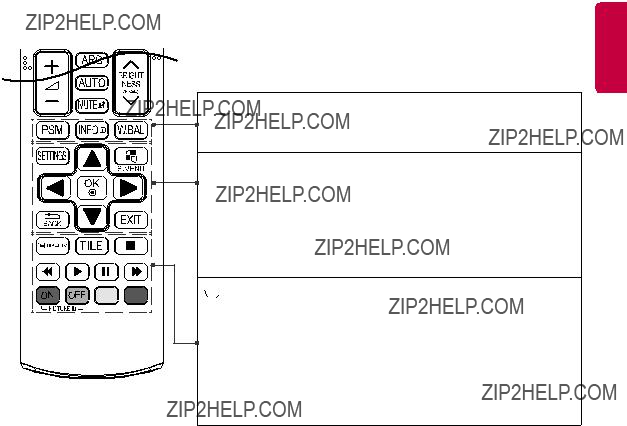
13
ENGLISH
PSM Selects the Picture Mode.
INFO Views the information of the currently program and the screen. W.BAL Enters the White Balance menu.
Views the information of the currently program and the screen. W.BAL Enters the White Balance menu.
SETTINGS Accesses the main menus or saves your input and exit menus. S.MENU SuperSign menu key (Depending upon the model, this feature
may not be supported.)
Navigation Buttons Scrolls through menus or options. OK Selects menus or options and confirms your input.
BACK Allows you to move back one step in the user interaction function. EXIT Quit all OSD tasks and applications.




 Allows you to control various multimedia devices to enjoy multimedia simply by using the remote control through the SimpLink menu. (Depending upon the model, this feature
Allows you to control various multimedia devices to enjoy multimedia simply by using the remote control through the SimpLink menu. (Depending upon the model, this feature
may not be supported.) TILE Selects the TILE Mode.
PICTURE ID ON/OFF When the Picture ID number matches the Set ID number, you can control whichever monitor you want in
USB Menu Control Buttons Controls media playback.

ENGLISH
14
Displaying the Device Name Connected to an Input Port
Display which devices are connected to which external input ports.
1Access the Input list screen and press the red (input label) button on the remote control.
2You can assign an input label for every input except USB.
 NOTE
NOTE
?????? External inputs supported : HDMI,
DISPLAYPORT, OPS,
RGB
?????? Labels available : PC, DTV
?????? The input labels are displayed on the Input Label screen or at the top left of the screen when you change the external input setting.
?????? For
White Balance Adjust Menu
Press the W.BAL button on the remote control.
??????
??????
??????
?????? Backlight : Adjusts the brightness. The higher the number, the brighter the set. This works in the same way as the backlight of the user menu.
?????? Reset : Resets the white balance value to the factory settings.

15
MAKING CONNECTIONS
You can connect various external devices to your monitor. Change the input mode and select the external device you want to connect.
For more information about external device connections, see the user manual provided with each device.
Connecting to a PC
Some of the cables are not provided.
This monitor supports the Plug & Play* feature.
* Plug & Play: a feature that enables a PC to recognize devices attached by the user without device configuration or user intervention when powering up.
External Device Connection
Connect a HD receiver, DVD, or VCR player to the monitor and select an appropriate input mode.
Some of the cables are not provided. For the best picture and sound quality, connecting external devices to your monitor using HDMI cables is recommended.
ENGLISH

ENGLISH
16
 NOTE
NOTE
?????? For the best image quality, using the monitor with HDMI connection is recommended.
?????? To comply with the standard specifications of the product, use a shielded interface cable with a ferrite core, such as a DVI cable.
?????? If you turn the monitor on when the set is cold, the screen may flicker. This is normal.
?????? Sometimes red, green, or blue spots may appear on the screen. This is normal.
?????? Use a High Speed HDMI??/TM cable.
?????? Use a certified cable with the HDMI logo attached. If you do not use a certified HDMI cable, the screen may not display or a connection error may occur.
?????? Recommended HDMI Cable Types
-
-
?????? If you cannot hear any sound in HDMI mode please check your PC settings. Some PCs require you to manually change the default audio output to HDMI.
?????? If you want to use
?????? You may experience compatibility issues if you use
?????? Make sure the power cable is disconnected.
?????? If you connect a gaming device to the monitor, use the cable provided with the gaming device.
?????? It is recommended to use the speakers that are provided as optional accessories.
?????? High Speed HDMI??/TM cables transmit a HD signal up to 1080p and higher.
?????? Use the standard Macintosh adapter since an incompatible adapter is available in the market. (Different signaling system)
?????? Apple computers may require an adapter to connect to this monitor. Call or visit their web site for more information.
 CAUTION
CAUTION
?????? Connect the signal input cable and tighten it by turning the screws clockwise.
?????? Do not press the screen with your finger for a prolonged period as this may result in temporary distortion on the screen.
?????? Avoid displaying static images on the screen for a long period of time to prevent image burn. Use a screensaver if possible.
?????? A wireless communication device near your monitor can affect the image.

17
Daisy Chain Monitors
To use different products connected to each other, connect one end of the signal input cable (DP Cable) to the DP Out connector of Monitor 1 and connect the other end to the DP In connector of the other product.
* DP Cable - Use a DP cable that is certified to DP1.1a (SST) or higher.
ENGLISH
 NOTE
NOTE
?????? If the signal is stable and there is no cable loss, in general, up to 100 monitors can be connected via the DP Out port (at the recommended resolution). If you want to connect more than this number of monitors, use a booster.
?????? If you set the tile mode using DVI or HDMI, you will not be able to watch
?????? If the signal cable between the product and your PC is too long, make sure to use the Booster or optical cable.

ENGLISH
18
TROUBLESHOOTING
No image is displayed
The Unknown Product message appears when the product is connected.
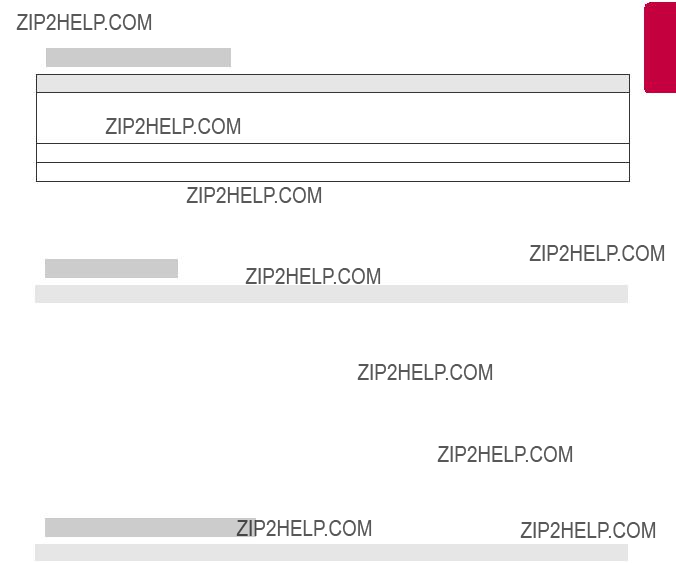
The audio function does not work.
19
ENGLISH
Screen color is abnormal.
The operation does not work normally.
 NOTE
NOTE
?????? The

20
ENGLISH
CAUTION
?????? Image sticking does not occur when using constantly changing images but may occur when using a fixed image for an extended period of time. Therefore, it is recommended that you use the instructions below to decrease the likelihood of image sticking occurring when using a fixed image. It is recommended that you change the screen at least once every 12 hours at the very minimum; if done more frequently, the prevention of image sticking is more effective.
Recommended operating conditions
1Change the background and the character colors using the same time interval.
When changing colors, using complementary colors helps to prevent image sticking.
2Change the image using the same time interval.
Make sure that the characters or images before changing the image remain in the same location after changing the image.
LC
PI
TFT Layers
Glass
ITO or MoTi Pixel Layer
What is image sticking?
When the LCD panel displays a static image for an extended period of time, it can cause a voltage difference between the electrodes that operate the liquid crystals. When the voltage difference between the electrodes builds up over time, liquid crystals have a tendency to remain aligned in
one direction. During this process, a previously displayed image remains visible. This phenomenon is referred to as image sticking.

21
PRODUCT SPECIFICATIONS
The product specifications below may be changed without prior notice due to upgrade of product functions. ??? ??? refers to alternating current (AC), and ???
??? refers to alternating current (AC), and ??? ??? refers to direct current (DC).
??? refers to direct current (DC).
ENGLISH

ENGLISH
22
42SH7DB
49SH7DB

23
55SH7DB
ENGLISH

ENGLISH
24
RGB(PC) Support mode
HDMI / OPS /
Support Mode
HDMI / OPS/ DISPLAYPORT (DTV) Support
Mode
 NOTE
NOTE
?????? PC resolutions available for the Input Label option in RGB/ HDMI/ OPS /
?????? Vertical frequency: The product display functions by the screen image changing dozens of times every second like a fluorescent lamp. The vertical frequency or refresh rate is the number of image displays per second. The unit is Hz.
?????? Horizontal frequency: The horizontal interval is the time taken to display one horizontal line. When 1 is divided by the horizontal interval, the number of horizontal lines displayed every second can be tabulated as the horizontal frequency. The unit is kHz.
?????? DISPLAYPORT does not support YCbCr 4:2:2.

ENERGY STAR?? is a set of
As an ENERGY STAR?? Partner LGE U. S. A., Inc. has determined that this product meets the ENERGY STAR?? guidelines for energy efficiency. Refer to ENERGY STAR.gov for more information on the ENERGY STAR?? program.
MODEL
SERIAL
Make sure to read the Safety Precautions before using the product.
The model and serial numbers of the SET are located on the back and one side of the SET. Record it below should you ever need service.
WARNING
Temporary noise is normal when powering ON or OFF this device.

USER GUIDE
LG Digital
Signage
(MONITOR SIGNAGE)
L15
Please read this manual carefully before operating your set and retain it for future reference.

ENGLISH
2
TABLE OF
CONTENTS
3 USING THE MONITOR
3 Using the Input List
3 Adjusting Aspect Ratio
5 ENTERTAINMENT
5 Using the Network
5 - Connecting to a Network
7 - Network Status
7 Using the My Media
7 - Connecting USB storage devices
9 - Browsing Files
11 - Viewing Movies
14 - Viewing Photos
16 - Listening to Music
18- Viewing the Contents List
19CUSTOMIZING SETTINGS
19Accessing Main Menus
20- PICTURE Settings
23- AUDIO Settings
24- TIME Settings
25- OPTION Settings
28- NETWORK Settings
29 IR CODES
31TO CONTROL MULTIPLE
PRODUCTS
31Connecting the Cable
32
32- 4P Cable
32-
32Communication Parameter
33Command Reference List
35 Transmission / Receiving Protocol
To obtain the source code under GPL, LGPL, MPL, and other open source licenses, that is contained in this product, please visit http://opensource.lge.com.
In addition to the source code, all referred license terms, warranty disclaimers and copyright notices are available for download. LG Electronics will also provide open source code to you on

3
USING THE MONITOR
Using the Input List
1Press INPUT to access the Input List.
2Press the navigation buttons to scroll to one of the input mode and press OK.
yy
yy Display Port yy OPS
Adjusting Aspect Ratio
Resize the image to view the image at its optimal size by pressing ARC while you are watching monitor set.
ENGLISH
 NOTE
NOTE
?????? You can also change the image size by accessing the main menus.
?????? The Just Scan mode operates when a video signal has resolution of 720p or higher.
 CAUTION
CAUTION
?????? If a fixed image displays on the screen for a long period of time, it will be imprinted and become a permanent disfigurement on the screen. This is image burn or
?????? If you don't use your monitor, turn the power off or set a screen saver program from the PC or the system to prevent image retention.
?????? If the aspect ratio is set to 4:3 for a long period of time, image burn may occur on the letterboxed area of the screen.

ENGLISH
4
yy 16:9 : This selection will allow you to adjust the picture horizontally, in linear proportion, to fill the entire screen (useful for viewing 4:3 formatted DVDs).
yy Just Scan : This Selection will allow you view the picture of best quality without loss of original picture in high resolution image. Note: If there is noise in original Picture, You can see the noise at the edge.
yy Set By Program : Depending on the input signal, screen aspect ratio changes to 4:3 or 16:9.
yy 4:3 : This selection will allow you to view a picture with an original 4:3 aspect ratio, black bars will appear on both the left and right of the screen.
yy Zoom : This selection will allow you to view the picture without any alteration, while filling the entire screen. However, the top and bottom of the picture will be cropped.
yy Cinema Zoom1 : Choose Cinema Zoom when you want to enlarge the picture in correct proportion. Note: When enlarging or reducing the picture, the image may become distorted.

ENTERTAINMENT
Using the Network
Connecting to a Network
For wired network connections, connect the display to a local area network (LAN) via the LAN port as shown on the following diagram. Then, set up the network settings. For wireless network con- nections, connect the
After making a physical connection, a small number of home networks may require the display network settings to be adjusted. For most home networks, the display will connect to automatically without any adjustments.
For detail information, contact your internet pro- vider or router manual.
LAN
 CAUTION
CAUTION
?????? Do not connect a modular phone cable to the LAN port.
?????? Since there are various connection methods, please follow the specifications of your telecommunication carrier or internet service provider.
5
To set up the network settings: (Even if your display has already connected automatically, running setup again will not harm anything),
Connecting to a wired network
1Press SETTINGS to access the main menus.
2Press the navigation buttons to scroll to NET- WORK and press OK.
3Press the navigation buttons to select Net- work Setting and press OK.
4If you already set network setting, select Resetting. The new connection settings resets the current network settings.
5Select IP Auto Setting or IP Manual Setting.
-IP Manual Setting
press the navigation and number buttons. IP addresses will need to be input manually.
-IP Auto Setting
Select this if there is a DHCP server (Router) on the local area network (LAN) via wired connection, the display will automatically be allocated an IP address. If you???re using a broadband router or broadband modem that has a DHCP (Dynamic Host Configuration Protocol) server function. The IP address will automatically be determined.
6When you are finished, press EXIT.
ENGLISH

6
CAUTION
?????? Network setting menu will not be available until the display connected to physical network.
?????? Since there are various connection methods, please follow the specifications of your telecommunication carrier or internet service provider.
NOTE
?????? If you want to access the Internet directly on your display, the Internet connection should always be on.
?????? If you cannot access the Internet, check the network conditions from a PC on your network.
?????? When you use Network Setting, check the LAN cable or check if DHCP in the router is turned on.
?????? If you do not complete the network settings, the network may not work properly.
Tips for Network setting
yy Use a standard LAN cable with this display. Cat5 or better with a RJ45 connector.
yy Many network connection problems during set up can often be fixed by
yy Depending on the internet service provider (ISP), the number of devices that can receive internet service may be limited by the applicable terms of service. For details, contact your ISP.
yy LG is not responsible for any malfunction of the display and/or the internet connection feature due to communication errors/malfunctions associated with your internet connection, or other connected equipment.
yy LG is not responsible for problems within your internet connection.
yy You may experience undesired results if the net- work connection speed does not meet the require- ments of the content being accessed.
yy Some internet connection operations may not be possible due to certain restrictions set by the Inter- net service provider (ISP) supplying your Internet connection.
yy Any fees charged by an ISP including, without limi- tation, connection charges are your respon- sibility.
yy A 10
yy A DSL modem is required to use DSL service and a cable modem is required to use cable modem service. Depending on the access method of and subscriber agreement with your ISP, you may not be able to use the Internet connection feature con- tained in this display or you may be limited to the number of devices you can connect at the same time. (If your ISP limits subscription to one device, this display may not be allowed to connect when a PC is already connected.)
yy The use of a router may not be allowed or its usage may be limited depending on the policies and restrictions of your ISP. For details, contact your ISP directly.
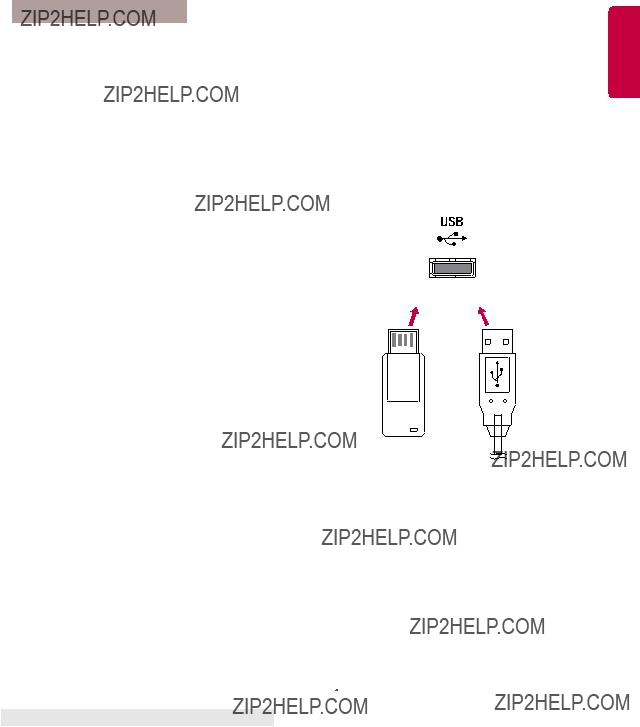
Tips for Wireless Network Setting
yy Wireless networks can be subject to interfer- ence from other devices operating at a fre- quency of 2.4 GHz (wireless phones, Bluetooth devices, or microwave ovens). There may also be interference from devices with a frequency of 5 GHz, same as other
yy The surrounding wireless environment can cause the wireless network service to run slowly.
yy For an AP connection, an access point device that supports wireless connection is required and the wireless connection feature must be enabled on the device. Contact your service provider regarding availability of wireless con- nection on your access point.
yy Check the SSID and security settings of the AP for AP connection. Refer to the appropriate documentation for SSID and security settings of the AP.
yy Invalid settings on network devices (wired/ wireless line sharer, hub) can cause the monitor to run slowly or not operate properly. Install the devices correctly according to the appropriate manual and set the network.
yy Connection method may differ according to the AP manufacturer.
Network Status
1Press SETTINGS to access the main menus.
2Press the navigation buttons to scroll to
NETWORK and press OK.
3Press the navigation buttons to select
Network Status.
4Press OK to check the network status.
5When you are finished, press EXIT.
7
memory, external hard drive to the display and use multimedia features.
Connect a USB flash memory or USB memory card reader to the Display as shown on the following illustration. The My Media screen appears.
or
 CAUTION
CAUTION
?????? Do not turn the display off or remove a USB storage device while MY MEDIA menu is activated, as this could result in loss of files or damage to the USB storage device.
?????? Back up your files saved on a USB storage device frequently, as you may lose or damage the files and this may be not covered by the warranty.

ENGLISH
8
Tips for using USB storage devices
yy Only a USB storage device is recognizable.
yy If the USB storage device is connected through a USB hub, the device is not recognizable.
yy A USB storage device using an automatic rec- ognition program may not be recognized.
yy A USB storage device which uses its own driver will not be recognized.
yy The recognition speed of a USB storage device may depend on each device.
yy Please do not turn off the display or unplug the USB device when the connected USB stor- age device is working. When such a device is suddenly separated or unplugged, the stored files or the USB storage device may be dam- aged.
yy Please do not connect the USB storage device which was artificially maneuvered on the PC. The device may cause the product to malfunc- tion. Only use a USB storage device which has normal music files, image files
or movie files.
yy Please only use USB storage devices formatted using the FAT32 file system. Storage devices formatted with utility programs that are not supported by Windows may not be recog- nized.
yy Please connect power to a USB storage device (over 0.5 A) which requires an external power supply. If not, the device may not be recog- nized.
yy Please connect a USB storage device with the cable included by the device maker.
yy Some USB storage devices may not be sup- ported or operate smoothly.
yy File alignment method of USB storage devices is similar to Window XP and the monitor can recognize up to 100 English characters.
yy Be sure to back up important files since data stored on a USB memory device may be dam- aged. We will not be responsible for any data loss.
yy If the USB HDD does not have an external power source, the USB device may not be detected. So be sure to connect the external power source.
-Please use a power adaptor for an external power source.
yy If your USB memory device has multiple parti- tions, or if you use a USB
yy If a USB memory device is connected to a USB
yy If the USB memory device does not work prop- erly, disconnect and reconnect it.
yy How fast a USB memory device is detected differs from device to device.
yy If the USB is connected in Standby Mode, that drive will automatically be loaded when the display is turned on.
yy The recommended capacity is 1 TB or less for a USB external hard disk and 32 GB or less for USB memory.
yy Any device with more than the recommended capacity may not work properly.
yy If a USB external hard disk with a Energy Sav- ing function does not work, turn the hard disk off and on again to make it work properly.
yy USB storage devices below USB 2.0 are sup- ported as well. But they may not work properly with videos.
yy A maximum of 999 folders or files can be recognized under one folder.
yy It is recommended you use a certified USB storage device and cable. Otherwise, a USB storage device may not be detected or a play- back error may occur.
yy Only a USB memory device can be used to play back the files distributed and stored by Super- Sign Manager. A USB hard disk or
yy Only an FAT 32 file formatted storage device can play back the files distributed and stored by SuperSign manager.
yy A USB 3.0 storage device may not work.
yy Data on some USB storage devices may be damaged in a high temperature environment.
yy It is recommended that you avoid playing contents using more than two USB ports simultaneously.

9
Browsing Files
Browse files saved in a USB storage device.
1Press SETTINGS to access the main menu.
2Press the search button to scroll to MY MEDIA and press OK.
3Press the Search button to go to the Movie List, Photo List, Music List, or Content List that you want, and press OK.
Supported file format
Bit rate : within 8 kbps to 320 kbps(MP3)
External Subtitle format : *.smi/*.srt/*.sub(MicroDVD, Subviewer1.0/2.0)/*.ass/*.ssa/*.txt(TMPlayer)/*. psb(PowerDivX)
Internal Subtitle format : only, XSUB (It is the subtitle format used in DivX6 files)
ENGLISH

ENGLISH
10

11
Viewing Movies
Plays movie files saved in the USB storage device.
1Press SETTINGS to access the main menu.
2Press the navigation button to scroll to MY MEDIA and press OK.
3Press the navigation button to scroll to Movie List and press OK.
4Press the navigation buttons to scroll to a folder you want and press OK.
5Press the navigation buttons to scroll to a file you want and press OK.
yy Change Device : Selects the USB storage device. (Depending on model)
yy Go to root folder : Returns to the home screen of My Media.
yy Go to upper folder : Returns to the previous screen.
yy Exit : Exits My Media.
6 During movie playback, press OK to access the following settings.
ENGLISH

ENGLISH
12
Tips for using playing video files
yy Some
yy Some special characters are not supported in subtitles. yy HTML tags are not supported in subtitles.
yy Subtitles in languages other than the supported languages are not available.
yy The screen may suffer temporary interruptions (image stoppage, faster playback, etc.) when the audio language is changed.
yy A damaged movie file may not be played correctly, or some player functions may not be usable. yy Movie files produced with some encoders may not be played correctly.
yy If the video and audio structure of recorded file is not interleaved, either video or audio is outputted.
yy HD videos with a maximum of 1920 X 1080 @ 25/30P or 1280 X 720 @ 50/60P are supported, depending on the frame.
yy Videos with resolutions higher than 1920 X 1080 @ 25/30P or 1280 X 720 @ 50/60P may not work prop- erly depending on the frame.
yy Movie files other than the specified types and formats may not work properly. yy Max bitrate of playable movie file is 20 Mbps. (only, Motion JPEG : 10 Mbps)
yy We do not guarantee smooth playback of profiles encoded level 4.1 or higher in H.264/AVC. yy DTS Audio codec is not supported.
yy A movie file more than 30 GB in file size is not supported for playback. yy A DivX movie file and its subtitle file must be located in the same folder.
yy A video file name and its subtitle file name must be identical for it to be displayed.
yy Playing a video via a USB connection that doesn???t support high speed may not work properly. yy Files encoded with GMC(Global Motion Compensation) may not be played.
Video options
1Press SETTINGS to access the
2Press the navigation buttons to scroll to Set Video Play, Set Video, or Set Audio, and press OK.
NOTE
yy The option values changed in Movie List do not affect Photo List or Music List.Therefore, they are not affected by option values changed in Photo List or Music List.
yy The option values changed in Photo List and Music List do affect each other.
yy When replaying the video file after stopping, you can play from where it stopped previously.

13
Select Set Video Play to access the following menus:
ENGLISH
 NOTE
NOTE
yy Only 10,000 of sync blocks can be supported within the subtitle file.
yy When playing a video, you can adjust the picture size by pressing the ARC button.
yy Subtitles in your language are only supported when the OSD menu is also in this language. yy The code page options may be disabled depending on the language of the subtitle files. yy Select the appropriate code page for the subtitle files.
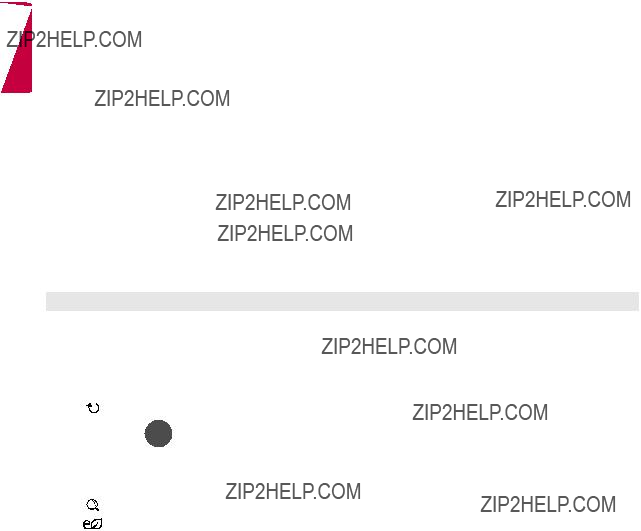
ENGLISH
14
Viewing Photos
View image files saved in the USB storage device.
1Press SETTINGS to access the main menu.
2Press the navigation button to scroll to MY MEDIA and press OK.
3Press the navigation button to scroll to Photo List and press OK.
4Press the navigation buttons to scroll to a folder you want and press OK.
5Press the navigation buttons to scroll to a file you want and press OK.
yy Change Device : Selects the USB storage device. (Depending on model)
yy Go to root folder : Returns to the home screen of My Media.
yy Go to upper folder : Returns to the previous screen.
yy Exit : Exits My Media.
6 While viewing photos, you can access the following settings.

NOTE
yy The option values changed in Movie List do not affect Photo List or Music List.Therefore, they are not affected by option values changed in Photo List or Music List.
yy The option values changed in Photo List and Music List do affect each other.
Select Setting Photo View to access the following menus:

ENGLISH
16
Listening to Music
Plays music files saved in the USB storage device.
1Press SETTINGS to access the main menu.
2Press the navigation button to scroll to MY MEDIA and press OK.
3Press the navigation button to scroll to Music List and press OK.
4Press the navigation buttons to scroll to a folder you want and press OK.
5Press the navigation buttons to scroll to a file you want and press OK.
yy Change Device : Selects the USB storage device. (Depending on model)
yy Go to root folder : Returns to the home screen of My Media.
yy Open Music Player : Opens the settings window for music. This feature is activated only during playback.
yy Go to upper folder : Returns to the previous screen.
yy Exit : Exits My Media.
6 During music playback, press OK to access the following settings.

17
Tips for playing music files
yy This unit cannot support the ID3 Tag embedded MP3 files.
 NOTE
NOTE
yy A damaged or corrupted music file does not play but displays 00:00 in playtime.
yy A music downloaded from a paid service with copyright protection does not start but displays inappropriate informa-
file name
 002. B02.mp3
002. B02.mp3
00:31 / 04:04
Time elapsed/ Duration
Music options
1Press SETTINGS to access the
2Press the navigation buttons to scroll to Set Audio Play or Set Audio and press OK.
NOTE
yy The option values changed in Movie List do not affect Photo List or Music List.Therefore, they are not affected by option values changed in Photo List or Music List.
yy The option values changed in Photo List and Music List do affect each other.
When you select the Set Audio Play,
ENGLISH

ENGLISH
18
Viewing the Contents List
Plays back the stored files using the Export option in SuperSign Manager.
1Press SETTINGS to access the main menu.
2Press the navigation button to scroll to MY MEDIA and press OK.
3Press the navigation button to scroll to Contents List and press OK.
4Press the navigation buttons to scroll to a folder you want and press OK.
5Press the navigation buttons to scroll to a file you want and press OK.
yy Change Device : Selects the USB storage device. (Depending on model)
yy Go to root folder : Returns to the home screen of My Media.
yy Go to upper folder : Returns to the previous screen.
yy Exit : Exits My Media.
NOTE
yy While playing media files from Contents List, only the BACK, EXIT, or volume button are available. Selecting the BACK or EXIT button stops playing media files and returns to the Contents List.
yy When you use the distribution feature which utilizes SuperSign Software, the storage device used to store contents is determined based on the size of the remaining memory space. (Note: If USB ports 1 and 2 have the same memory space, contents will be saved on the storage device connected to USB port 1.(Depending on model))
yy If there is the AutoPlay folder in the USB device and its files are in supported formats, they can be played back automatically when the USB device is connected to the monitor.
yy It is recommended that you avoid playing contents using more than two USB ports simultaneously. yy With respect to the playback of distribution or contents schedules through SuperSign Software, the
schedule executed last time is played.

19
CUSTOMIZING SETTINGS
Accessing Main Menus
1Press SETTINGS to access the main menus.
2Press the navigation buttons to scroll to one of the following menus and press OK.
3Press the navigation buttons to scroll to the setting or option you want and press OK.
4When you are finished, press EXIT. When you return to the previous menu, press BACK.
yy PICTURE : Adjusts the image size, quality, or effect.
yy AUDIO : Adjusts the sound quality, effect, or volume level.
yy TIME : Sets the time, date, or timer feature.
yy OPTION : Customizes the general settings.
yy NETWORK : Sets up the network setting.
yy MY MEDIA : Display and play movie, photo and music contents stored on your USB or signage device (Internal storage device).
ENGLISH

ENGLISH
20
PICTURE Settings
1Press SETTINGS to access the main menus.
2Press the navigation buttons to scroll to PICTURE and press OK.
3Press the navigation buttons to scroll to the setting or option you want and press OK. - To return to the previous level, press BACK.
4When you are finished, press EXIT.
When you return to the previous menu, press BACK.
The available picture settings are described in the following:
Picture Mode Selects the picture mode optimized for the viewing environment or the programme.
Mode
Aspect Ratio Changes the image size to view images at its optimal size.

21
Basic image options
ENGLISH
 NOTE
NOTE
yy When you select a picture mode, related menus are set automatically.
yy When using the Smart Energy Saving function, the screen may look saturated in the white area of a still image. yy If Energy Saving is set to Minimum, Medium, or Maximum, the Smart Energy Saving function is disabled.

ENGLISH
22
Advanced Control - Picture Mode (Standard/ APS/ Sport/ Game/ Calibration)
Picture Option - HDMI(DTV) Mode

23
AUDIO Settings
1Press SETTINGS to access the main menus.
2Press the navigation buttons to scroll to AUDIO and press OK.
3Press the navigation buttons to scroll to the setting or option you want and press OK. - To return to the previous level, press BACK.
4When you are finished, press EXIT.
When you return to the previous menu, press BACK.
The available audio options are described in the following:
ENGLISH
 NOTE
NOTE
yy Some models may not have
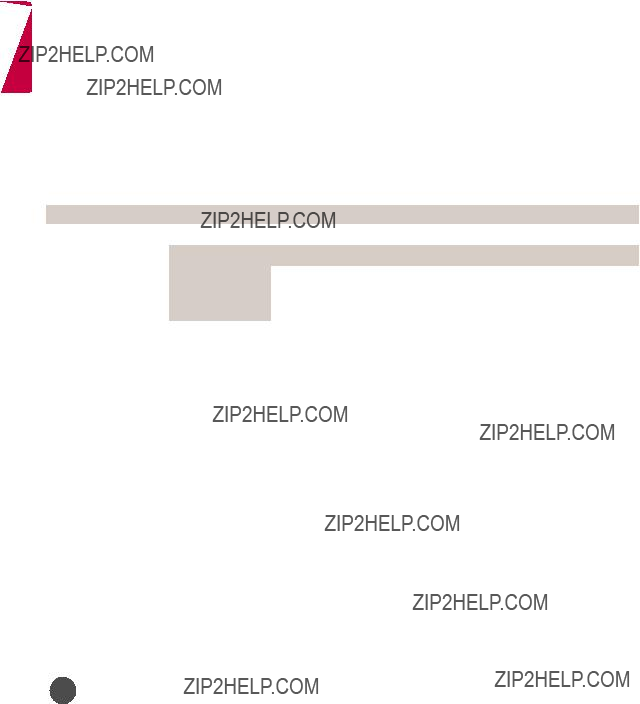
ENGLISH
24
TIME Settings
1Press SETTINGS to access the main menus.
2Press the navigation buttons to scroll to TIME and press OK.
3Press the navigation buttons to scroll to the setting or option you want and press OK. - To return to the previous level, press BACK.
4When you are finished, press EXIT.
When you return to the previous menu, press BACK.
The available time settings are described in the following:
NOTE
yy Off Time/ On Time can be saved for up to seven schedules; the monitor is turned on or off at the preset time in the schedule list. If multiple preset times are stored in the schedule list, this function works at the nearest time from the current time.
yy Once the on or off time is set, these functions operate daily at the preset time.
yy When the scheduled
yy If port 123 is blocked by a firewall, your monitor cannot receive the current time from the network.
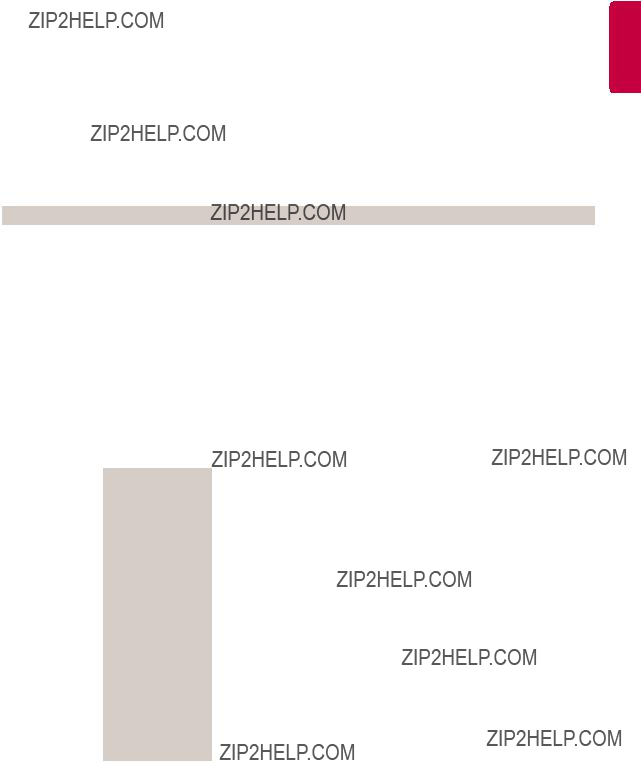
25
OPTION Settings
1Press SETTINGS to access the main menus.
2Press the navigation buttons to scroll to OPTION and press OK.
3Press the navigation buttons to scroll to the setting or option you want and press OK. - To return to the previous level, press BACK.
4When you are finished, press EXIT.
When you return to the previous menu, press BACK.
The available option settings are described in the following:
ENGLISH

ENGLISH
26
Level
Add Schedule Creates a contents schedule.
-Media: Select the file to which you want to apply the contents schedule.
-Select [Create] to register the contents schedule.
 NOTE
NOTE
yy Information about registered schedules is stored on your USB storage device. This feature does not work when your USB storage device has been removed.
yy The picture size is 1920 x 1080.
yy You can use photo and video files only.
yy You can add up to 50 files (photo files + video files = 50).
yy Only photos whose resolution is 1920 x 1080 or below are supported.
yy The default display time for photos is 1 minute. Playback time for movies differs depending on the running time.
yy You can create up to 7 schedules.
yy You cannot register a schedule when no file has been selected.
yy Contents schedules that have had information forcibly modified using a PC, etc. may not function properly.
yy With respect to the playback of distribution or contents schedules through SuperSign Software, the schedule executed last time is played.
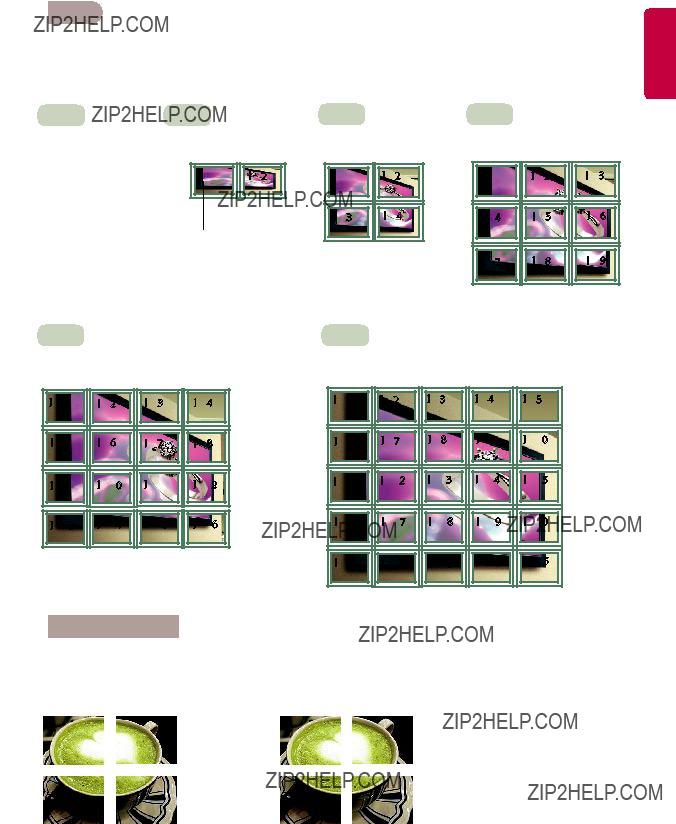
27
Tile Mode
This monitor can be tiled with additional monitors to create a large tiled display.
ENGLISH
Tile ID
2X2
When using 4 monitors
3X3
When using 9 monitors
4X4
When using 16 monitors
ID 3
ID 8
Tile Mode - Natural mode
When active, the part of the image that would normally be displayed in the gap between the monitors is omitted.

ENGLISH
28
NETWORK Settings
1Press SETTINGS to access the main menus.
2Press the navigation buttons to scroll to NETWORK and press OK.
3Press the navigation buttons to scroll to the setting or option you want and press OK. - To return to the previous level, press BACK.
4When you are finished, press EXIT.
When you return to the previous menu, press BACK.
The available option settings are described in the following:
Network Connection Options

IR CODES
yy All models do not support the HDMI/USB function.
yy Some key codes are not supported depending on the model.
29
ENGLISH

30
ENGLISH

31
TO CONTROL MULTIPLE PRODUCTS
yy Use this method to connect several products to a single PC. You can control several products at a time by connecting them to a single PC.
yy In the Option menu, Set ID must be between 1 and 255 (or from 1 to 1,000) without being duplicated.
Connecting the Cable
Connect the
yy The
PC
ENGLISH

32
 NOTE
NOTE
?????? When using
standard), an IR daisy chain cannot be used.
?????? If you want to control multiple units simultaneously, use 3.5 mm
Communication Parameter
?????? Baud Rate : 9600 BPS
?????? Data Length : 8 bit
?????? Parity Bit : None
?????? Stop Bit : 1 bit
?????? Flow Control : None
?????? Communication Code : ASCII code
?????? Use a crossed (reverse) cable

33
Command Reference List
ENGLISH

34
 NOTE
NOTE
yy During USB operations such as Dvix or EMF, all commands except Power (k a) and Key (m c) are not executed and treated as NG.
yy Some commands are not supported depending on the model.
yy The ???f f??? command which shows the status of a certain command does not display the OSD as the result in order to be compatible with SuperSign program.

35
Transmission / Receiving Protocol
Transmission
[Command1][Command2][ ][Set ID][ ][Data][Cr]
ENGLISH
Acknowledgement
[Command2][ ][Set ID][ ][OK/NG][Data][x]
*The Product transmits an ACK (acknowledgement) based on this format when receiving normal data. At this time, if the data is FF, it indicates the present status data. If the data is in data write mode, it returns the data of the PC computer.
*If a command is sent with Set ID '00' (=0x00) or '000 (=0x000)', the data is reflected to all monitor sets and they do send any acknowledgement (ACK).
*If the data value 'FF' is sent in control mode via
*Some commands may not be supported on some models.

ENGLISH
36
01. Power (Command: k a)
Controls the power on/off of the set.
Transmission
[k][a][ ][Set ID][ ][Data][Cr]
Acknowledgement
[a][ ][Set ID][ ][OK/NG][Data][x]
*Only when the monitor is fully powered on, the acknowledgement signal is returned properly.
*There may be a delay between the transmission and acknowledgement signals.
02. Select input (Command: x b)
Selects an input signal.
Transmission
[x][b][ ][Set ID][ ][Data][Cr]
Acknowledgement
[b][ ][Set ID][ ][OK/NG][Data][x]
* Some input signals may not be supported on some models.
03. Aspect ratio (Command: k c)
Adjusts the aspect ratio.
*Available data types differ depending on the input signal. For more information, see the aspect ratio section of the owner's manual.
*The aspect ratio may differ depending on the model's input configuration.
Acknowledgement
[c][ ][Set ID][ ][OK/NG][Data][x]
04. Energy saving (Command: j q)
Sets the energy saving function.
Transmission
[j][q][ ][Set ID][ ][Data][Cr]
Acknowledgement
[q][ ][Set ID][ ][OK/NG][Data][x]
** This may not be supported on some models.
05. Picture mode (Command: d x)
Selects a picture mode.
Transmission
[d][x][ ][Set ID][ ][Data][Cr]
Acknowledgement
[x][ ][Set ID][ ][OK/NG][Data][x]
06. Contrast (Command: k g)
Adjusts the screen contrast.

07. Brightness (Command: k h)
Adjusts the screen brightness.
08. Sharpness (Command: k k)
Adjusts the screen sharpness.
09. Color (Command: k i)
Adjusts the screen color.
37
10. Tint (Command: k j)
Adjusts the screen tint.
11. Color temperature (Command: x u)
Adjusts the screen color temperature.
Transmission
[x][u][ ][Set ID][ ][Data][Cr]
Acknowledgement
[u][ ][Set ID][ ][OK/NG][Data][x]
12. H position (Command: f q)
Adjusts the horizontal position of the screen.
This function is only available when the Tile Mode is set to Off. * The operational range varies depending on the RGB input resolution.
(Only available in
Transmission
[f][q][ ][Set ID][ ][Data][Cr]
Acknowledgement
[q][ ][Set ID][ ][OK/NG][Data][x]
ENGLISH

ENGLISH
38
13. V position (Command: f r)
Adjusts the vertical position of the screen.
This function is only available when the Tile Mode is set to Off.
* The operational range varies depending on the RGB input resolution.
(Only available in
Transmission
[f][r][ ][Set ID][ ][Data][Cr]
Acknowledgement
[r][ ][Set ID][ ][OK/NG][Data][x]
14. H size (Command: f s)
Adjusts the horizontal size of the screen.
This function is only available when the Tile Mode is set to Off. * The operational range varies depending on the RGB input resolution.
(Only available in
Transmission
[f][s][ ][Set ID][ ][Data][Cr]
Acknowledgement
[s][ ][Set ID][ ][OK/NG][Data][x]
15. Auto Config. (Command: j u)
Automatically corrects position and shaking of the picture. (Only available in
Transmission
[j][u][ ][Set ID][ ][Data][Cr]
Acknowledgement
[u][ ][Set ID][ ][OK/NG][Data][x]
16. Balance (Command: k t)
Adjusts the sound balance.
17. Sound mode (Command: d y)
Selects a sound mode.
Transmission
[d][y][ ][Set ID][ ][Data][Cr]
Acknowledgement
[y][ ][Set ID][ ][OK/NG][Data][x]
18. Mute (Command: k e)
Mutes/unmutes the sound.
Transmission
[k][e][ ][Set ID][ ][Data][Cr]
Acknowledgement
[e][ ][Set ID][ ][OK/NG][Data][x]
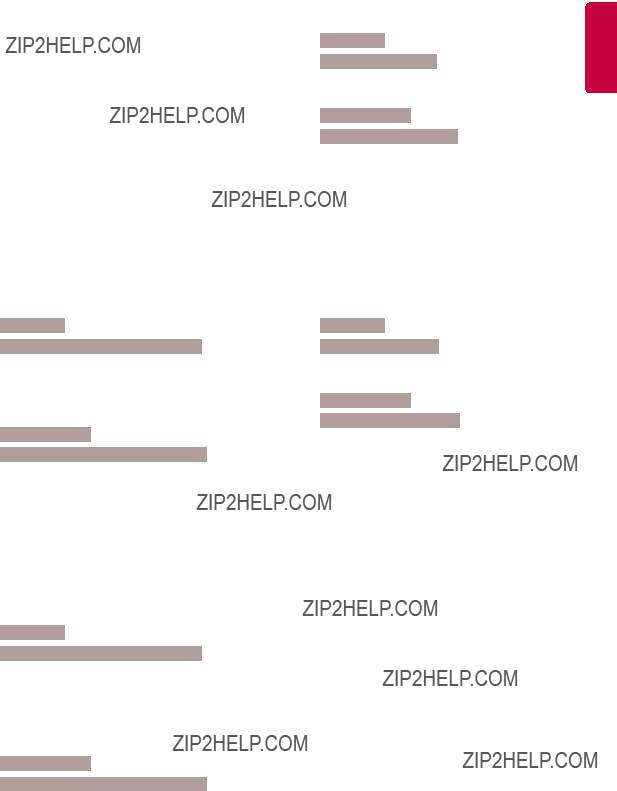
19. Volume (Command: k f)
Adjusts the playback volume.
20. Clock 1 (year/month/day) (Command: f a)
Adjusts the Clock 1 (year/month/day) value.
Transmission
[f][a][ ][Set ID][ ][Data1][ ][Data2][ ][Data3][Cr]
* Enter "fa [Set ID] ff" to view the Clock 1 (year/month/day) settings.
Acknowledgement
[a][ ][Set ID][ ][OK/NG][Data1][Data2][Data3][x]
21. Clock 2 (hour/minute/second) (Command: f x)
Adjusts the Clock 2 (hour/minute/second) value.
Transmission
[f][x][ ][Set ID][ ][Data1][ ][Data2][ ][Data3][Cr]
*Enter "fa [Set ID] ff" to view the Clock 2 (hour/minute/second) settings.
**This function is only available when Clock 1 (year/month/ day) is set.
Acknowledgement
[x][ ][Set ID][ ][OK/NG][Data1][Data2][Data3][x]
22. Off time schedule (Command: f c)
Enables/disables the on time schedule.
Transmission
[f][c][ ][Set ID][ ][Data][Cr]
Data 00: Off 01: On
Acknowledgement
[c][ ][Set ID][ ][OK/NG][Data][x]
23. On time schedule (Command: f b)
Enables/disables the on time schedule.
Transmission
[f][b][ ][Set ID][ ][Data][Cr]
Acknowledgement
[b][ ][Set ID][ ][OK/NG][Data][x]
39
ENGLISH

ENGLISH
40
24. Off timer (repeat mode/time) (Command: f e)
Configures the off time (repeat mode/time) settings.
Transmission
[f][e][ ][Set ID][ ][Data1][ ][Data2][ ][Data3][Cr]
Data1
1. F1 to F7 (reading data)
F1: Read the 1st off timer data
F2: Read the 2nd off timer data
F3: Read the 3rd off timer data
F4: Read the 4th off timer data
F5: Read the 5th off timer data
F6: Read the 6th off timer data
F7: Read the 7th off timer data
2.E1 to E7 (deleting one index), E0 (deleting all indexes) E0: Erase all off timer setting
E1: Erase the 1st off timer setting
E2: Erase the 2nd off timer setting
E3: Erase the 3rd off timer setting
E4: Erase the 4th off timer setting
E5: Erase the 5th off timer setting
E6: Erase the 6th off timer setting
E7: Erase the 7th off timer setting
3.01 to 0C (setting the day of the week for off timer) 01: Once
02.Daily 03: Mon - Fri 04: Mon - Sat 05: Sat - Sun
06.Every Sunday
07.Every Monday
08.Every Tuesday
09.Every Wednesday 0A. Every Thursday 0B. Every Friday
0C. Every Saturday
*To read or delete the Off Time list, set FFH for [Data2] and [Data3].
Example 1: fe 01 f1 ff ff - Read the 1st index data from off timer.
Example 2: fe 01 e1 ff ff - Delete the 1st index data from off timer.
Example 3: fe 01 04 02 03 - Sets Off Timer to 02:03 for Monday- Saturday.
*This function is only available when Clock 1 (year/month/day) and Clock 2 (hour/minute/second) are set.
Acknowledgement
[e][ ][Set ID][ ][OK/NG][Data1][Data2][Data3][x]
25. On timer (repeat mode/time) (Command: f d)
Configures the on time (repeat mode/time) settings.
Transmission
[f][d][ ][Set ID][ ][Data1][ ][Data2][ ][Data3][Cr]
Data1
1. F1 to F7 (reading data)
F1: Read the 1st on timer data
F2: Read the 2nd on timer data
F3: Read the 3rd on timer data
F4: Read the 4th on timer data
F5: Read the 5th on timer data
F6: Read the 6th on timer data
F7: Read the 7th on timer data
2.E1 to E7 (deleting one index), E0 (deleting all indexes) E0: Erase all on timer setting
E1: Erase the 1st on timer setting
E2: Erase the 2nd on timer setting
E3: Erase the 3rd on timer setting
E4: Erase the 4th on timer setting
E5: Erase the 5th on timer setting
E6: Erase the 6th on timer setting
E7: Erase the 7th on timer setting
3.01 to 0C (setting the day of the week for the on timer) 01: Once
02.Daily 03: Mon - Fri 04: Mon - Sat 05: Sat - Sun
06.Every Sunday
07.Every Monday
08.Every Tuesday
09.Every Wednesday 0A. Every Thursday 0B. Every Friday
0C. Every Saturday
*To read or delete an on timer list you have set, [Data2][Data3] must be set to FFH.
Example 1: fd 01 f1 ff ff - Read the 1st index data from on timer.
Example 2: fd 01 e1 ff ff - Delete the 1st index data from on timer.
Example 3: fd 01 04 02 03 - Set on timer at 02:03 on Monday to Saturday.
*This function is only available when Clock 1 (year/month/day) and Clock 2 (hour/minute/second) are set.
Acknowledgement
[d][ ][Set ID][ ][OK/NG][Data1][Data2][Data3][x]

26. On timer input (Command: f u)
Adds a new schedule entry by selecting input for the current on timer setting.
Transmission
[f][u][ ][Set ID][ ][Data1][Cr]
[f][u][ ][Set ID][ ][Data1][Data2][Cr]
Data (adding schedule) 60: RGB
70:
90: HDMI (HDMI1)
Data1
1. f1h to f7h (reading data)
F1: Select the 1st schedule input source
F2: Select the 2nd schedule input source
F3: Select the 3rd schedule input source
F4: Select the 4th schedule input source
F5: Select the 5th schedule input source
F6: Select the 6th schedule input source
F7: Select the 7th schedule input source
Data2
1. ffh (reading data)
To read the schedule input, enter FFH for [Data2].
If no schedule is available for [Data1] when attempting to read or change the schedule data, the text NG will be displayed and the operation will fail.
(Example 1: fu 01 60 - Move existing schedule entries down one row each and save RGB as input source for the 1st schedule entry.)
(Example 2: fu 01 f1 ff - Read the 1st schedule input data.)
*This function is only supported when 1 (year/month/date), 2 (hour/minute/second) and On Time (repeat mode/time) are set.
**Input may not be supported on some models.
Acknowledgement
[u][ ][Set ID][ ][OK/NG][Data][x]
[u][ ][Set ID][ ][OK/NG][Data1][Data2][x]
27. Automatic standby (Command: m n)
Configures the automatic standby settings.
28. Auto off (Command: f g)
Configures the automatic off settings.
29. Language (Command: f i)
Sets the OSD language.
41
ENGLISH

ENGLISH
42
30. Reset (Command: f k)
Resets settings for Picture, Screen and Audio or restores factory settings.
(Screen reset can only be performed in RGB input mode.)
31. Current temperature (Command: d n)
Checks the inside temperature value.
Transmission
[d][n][ ][Set ID][ ][Data][Cr]
Data FF: Check status
Acknowledgement
[n][ ][Set ID][ ][OK/NG][Data][x]
[n][ ][Set ID][ ][OK/NG][Data1][Data2][Data3][x]
* Temperature is displayed as a hexadecimal value.
32. Key (Command: m c)
Sends a key code for the IR remote control.
Transmission
[m][c][ ][Set ID][ ][Data][Cr]
Data IR_KEY_CODE
Acknowledgement
[c][ ][Set ID][ ][OK/NG][Data][x]
For key codes, see IR Codes.
* Some key codes may not be supported on some models.
33. Time elapsed (Command: d l)
Checks the elapsed time.
Acknowledgement
[l][ ][Set ID][ ][OK/NG][Data][x]
* The data received is shown as a hexadecimal value.
34. Product serial number (Command: f y)
Checks the serial number of the product.
Acknowledgement
[y][ ][Set ID][ ][OK/NG][Data][x] * Data is in ASCII code.
35. Software version (Command: f z)
Checks the software version of the product.

36. White balance red gain (Command: j m)
Adjusts the white balance red gain value.
Transmission
[j][m][ ][Set ID][ ][Data][Cr]
Data 00 to FE: Red gain 0 to 254
Acknowledgement
[m][ ][Set ID][ ][OK/NG][Data][x]
37. White balance green gain (Command: j n)
Adjusts the white balance green gain value.
Transmission
[j][n][ ][Set ID][ ][Data][Cr]
Data 00 to FE: Green gain 0 to 254
Acknowledgement
[n][ ][Set ID][ ][OK/NG][Data][x]
38. White balance blue gain (Command: j o)
Adjusts the white balance blue gain value.
Transmission
[j][o][ ][Set ID][ ][Data][Cr] Data 00 to FE: Blue gain 0 to 254
Acknowledgement
[o][ ][Set ID][ ][OK/NG][Data][x]
39. Backlight (Command: m g)
Adjusts the back light brightness.
Transmission
[m][g][ ][Set ID][ ][Data][Cr]
Acknowledgement
[g][][set ID][][OK/NG][Data][x]
** This may not be supported on some models.
40.Screen off (Command: k d)
Turns the screen on or off.
Transmission
[k][d][ ][Set ID][ ][Data][Cr]
Data 00: Turns the screen on 01: Turns the screen off
Acknowledgement
[d][ ][Set ID][ ][OK/NG][Data][x]
41. Tile Mode (Command: d d)
To set a Tile Mode and Tile Column/ Row values.
*00, 01, 10, 11 means Tile Mode Off
** It may not be supported depending on the model.
Acknowledgement
[d][ ][Set ID][ ][OK/NG][Data][x]
43
ENGLISH

ENGLISH
44
42. Tile Mode Check (Command: d z)
To check Tile Mode status.
** It may not be supported depending on the model.
43. Tile ID (Command: d i)
To set Tile ID.
Transmission
[d][i][ ][Set ID][ ][Data][Cr]
FF:Check Tile ID
**Data could not be set over (Tile Column) x (Tile Row).
**It may not be supported depending on the model.
Acknowledgement
[i][ ][Set ID][ ][OK/NG][Data][x]
*NG will be return if data is over (Tile Column) x (Tile Row), except 0xFF.
44. Tile H Position (Command: d e)
To adjust the Tile Horizontal position.
* This function is available only when the Natural option of the Tile Mode is set to Off while the Tile Mode set to On.
*Left/Right values depend on Tile H size.
** It may not be supported depending on the model.
Acknowledgement
[e][ ][Set ID][ ][OK/NG][Data][x]
45. Tile V Position (Command: d f)
To adjust the Tile Vertical position.
* This function is available only when the Natural option of the Tile Mode is set to Off while the Tile Mode set to On.
Transmission
[d][f][ ][Set ID][ ][Data][Cr]
*Bottom/Top values depend on Tile Vertical size.
**It may not be supported depending on the model.
Acknowledgement
[f][ ][Set ID][ ][OK/NG][Data][x]
46. Tile H Size (Command: d g)
To adjust the Tile Horizontal Size.
*Set Tile H Position to 0x32 before setting Tile H Size.
* This function is available only when the Natural option of the Tile Mode is set to Off while the Tile Mode set to On.
** It may not be supported depending on the model. Acknowledgement
[g][ ][Set ID][ ][OK/NG][Data][x]
47. Tile V Size (Command: d h)
To adjust the Tile Vertical size.
*Set Tile V Position to 0x00 before setting Tile V Size.
* This function is available only when the Natural option of the Tile Mode is set to Off while the Tile Mode set to On.
** It may not be supported depending on the model.
Acknowledgement
[h][ ][Set ID][ ][OK/NG][Data][x]

48. Natural Mode (In Tile Mode) (Command : d j)
To display the image naturally, the part of the image that would normally be displayed in the gap between the monitors is omitted.
Transmission
[d][j][ ][Set ID][ ][Data][Cr]
Acknowledgement
[j][ ][Set ID][ ][OK/NG][Data][x]
45
ENGLISH
